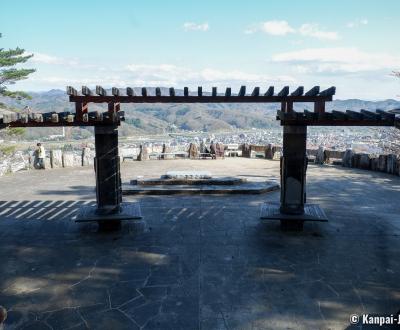Fukushima
The Underrated Prefecture Capital
Fukushima City is the capital of the eponymous prefecture, located about 300 kilometers to the north of Tokyo, in the Tohoku region of Japan. Although close to the area hit by 2011’s nuclear accident, the feudal city was not directly affected and its heritage and landscapes of mountains and flowers deserve to be discovered.
Located in the Naga-dori valley in the center of Fukushima prefecture, the capital is easily and quickly accessible by Shinkansen 🚅 train from Tokyo in the south and Sendai in the north.
A tumultuous history until 2011’s nuclear disaster
Fukushima is a former castle 🏯-town built along the Abukuma-gawa River, and as such has a tumultuous past. Its related feudal domain, initially named Daibutsu-jo, then Suginome-jo, was one of the most important strongholds of the Date clan during the Sengoku period (1477 - 1573). Fukushima Castle was later transferred to daimyo feudal lord Gamo Ujisato in 1592. Under the Tokugawa shogunate (1603 - 1867), it was successively ruled by several clans: the Honda, Hotta and especially the Itakura. With the restoration of the imperial power in the Meiji era (1868 - 1912), the feudal domains lost their independence and became prefectures. Fukushima then became the capital of the modern prefecture, and its castle was completely dismantled. Comparatively, the neighboring feudal city of Aizu-Wakamatsu owns a better-preserved architectural heritage of this time.
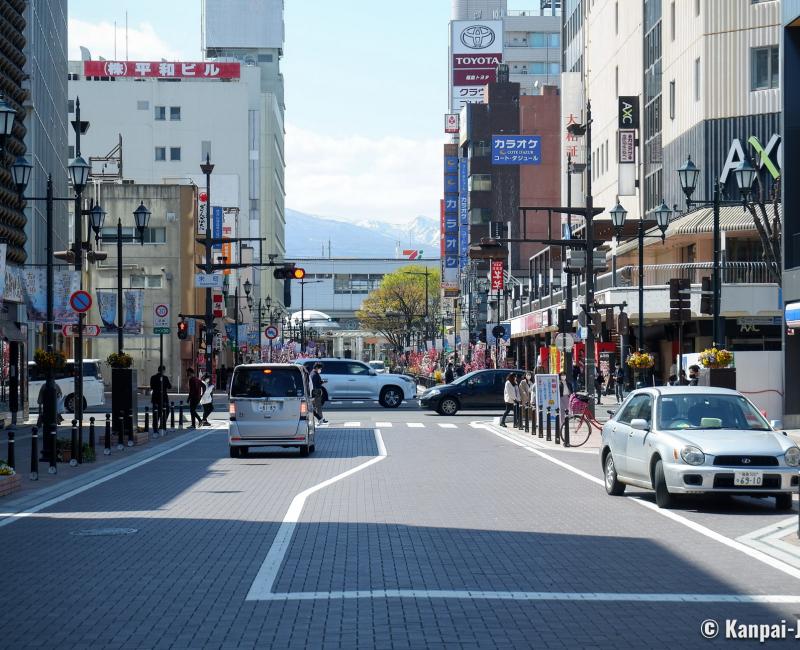
The city also suffered major natural disasters such as the eruption of Mount Bandai in 1888 that caused the death of 500 persons, and more recently, Great East Japan Earthquake in March 2011. The tremor caused a large-scale tsunami on the Pacific Coast and the explosion of the Fukushima Daiichi power plant located in Okuma City, about 64 kilometers to the south-east of the city.
A radiation level equivalent to those of the European capitals
While it was not hit by the tsunami, Fukushima City received some of the radioactive fallout, in a lesser extent however as the winds on the days following the explosion blew the cesium and radium particles towards the ocean. Therefore, the population was not affected by the evacuation orders, that encompassed a maximum radius of 30 kilometers around the power plant.
More than 10 years after, the radiation levels measured in the city’s main sites vary from 0,04 to 0,17μSv/h, that is to say the same levels detected in Berlin, London or Paris. Consequently, the visit of Fukushima City over a few days does not expose to a high level of radioactivity and is not harmful to the health. On the contrary, helping local tourism contributes to the revitalization of the region and its inhabitants.
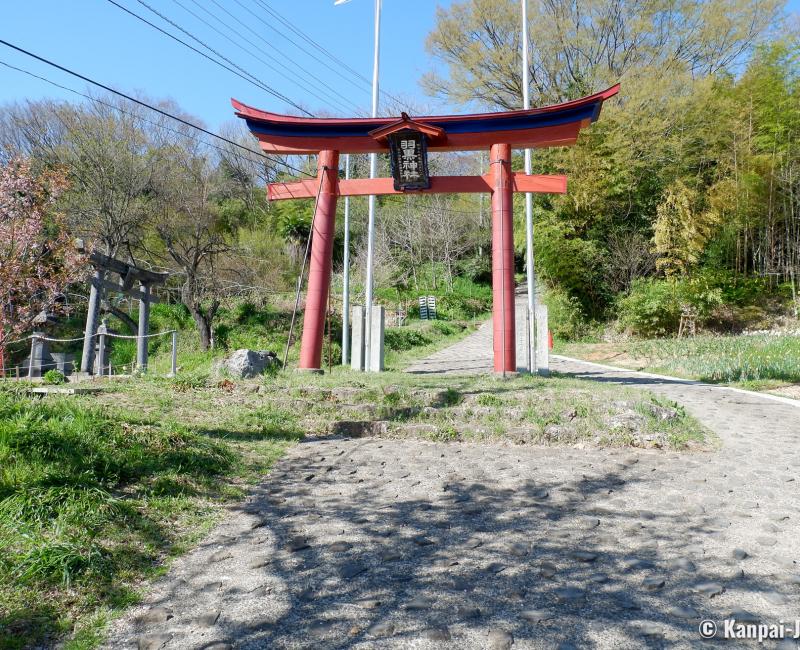
Mount Shinobu, the spiritual heart
The surroundings of the great Fukushima JR Station are full of hotels 🏨, all kinds of shops, bars and restaurants, and downtown Fukushima’s main tourist attractions are within walking distance on a one-day trip. Additionally, buses or local trains conveniently serve the city and its outskirts.
About 1 kilometer toward east, the discovery starts by a visit to Inari-jinja (福島稲荷神社) shrine whose specificity is its large torii ⛩️ gate made of Japanese cypress wood (hinoki). The spiritual sites enshrines:
- Toyouke Omikami (goddess of food),
- Okuninushi (considered as one of the founders of the country); and,
- His son Kotoshironushi (Izumo province’s local deity).
The foot of Mount Shinobu lies 2 kilometers toward north: it has a 7-kilometer circumference and several summits, the highest being at a 275-meter altitude. As any mountain in Japan, it is considered sacred and consequently its main access is overlooked by a tall stone torii gate. Several small Shinto shrines are scattered on its sides, whose most remarkable are:
- Fukushima Gokoku-jinja (福島縣護國神社) dedicated to the war victims originating from the prefecture,
- Neko Inari-jinja (ねこ稲荷), worshiping cats; and,
- Haguro-jinja (羽黒神社), located on a height, it is accessible by a path made of uneven stone steps. It displays Japan’s biggest waraji straw sandal, which is replaced every year during a specific ritual.
Shinobu-yama Park is the green lung of Fukushima City, and naturally attracts its inhabitants who come to stroll around and relax on good weather days, especially during the blooming of the cherry trees in April and the subsequent festivities of ohanami. Several walking paths wind along the hill and connect 4 observation platforms:
- The Shinobu Observation Deck N°1 and Karasugasaki Observation Deck to contemplate the city toward west and Mount Bandai,
- The Shinobu Observation Deck N°2 and 3 to admire the panorama toward east on the side of the rivers Matsu-gawa and Abukuma-gawa, as well as the large Fukushima Racetrack, where one can enjoy a bustling excitement during the frequent horse races.
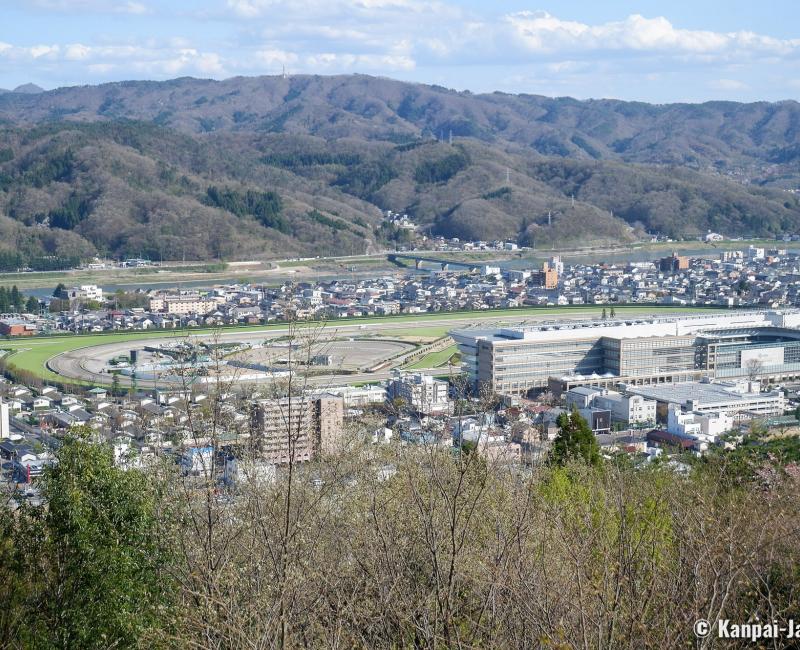
Iwaya Kannon sculptures
On the eastern side at the foot of Mount Shinobu, we recommend the visit of the Buddhist site Iwaya Kannon, where about sixty statues were carved in the cliff. The sculptures picture popular deities, such as:
- 33 images of Kannon, the goddess of compassion,
- Jizo, the protector of pilgrims and children,
- Fudo Myo-o, one of the 5 Kings of Wisdom; and,
- Benzaiten, the deity of arts and one of the 7 Lucky Gods.
The first sculptures are said to date back to a time between the end of the Heian period and the beginning of the Kamakura period, between 794 and 1185. Others have been added later during the Edo period (1603 - 1868). The current Kannon-do pavilion before the rocks was built in 1614.
Take the time to admire the details of the icons, especially their postures and the precision of their facial expressions. Some statues suffered the damages of time and are almost indiscernible from the cliff. Stairways allow to get closer to the highest ones.
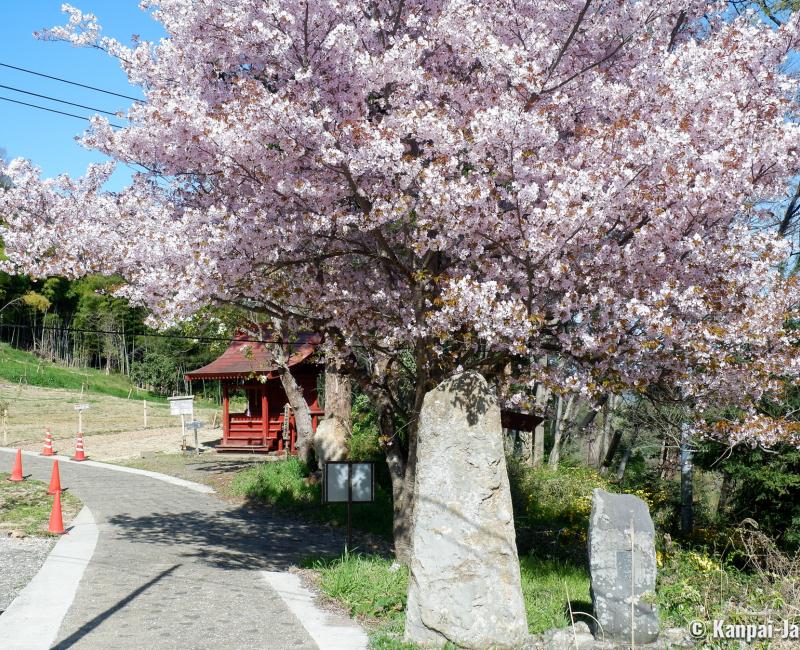
Mountains and onsen at the doorstep of the city
Moving away from the center of the city, vast mountain landscapes reveal themselves, covered in snow in winter, and marvelously flowered and green from spring to autumn 🍁. Several excursions are available, with the possibility to stay overnight in a ryokan inn.
The most remarkable are the scenic Mount Bandai and Mount Azuma with the lakes of Goshiki-numa, home to the renowned hot springs of Takayu and Tsuchiyu Onsen ♨️. In the north of Fukushima, you will find a 3rd thermal resort named Iizaka Onsen and the glowing Nakano Fudoson (中野不動尊) temple, wedged in the rock and dedicated to Fudo Myo-o. Lastly, amateurs of spring flowers will be delighted by an April stroll in Hanamiyama Park, located in the south-east of the city center and considered one of the most beautiful sakura 🌸 spots of the Tohoku area.

